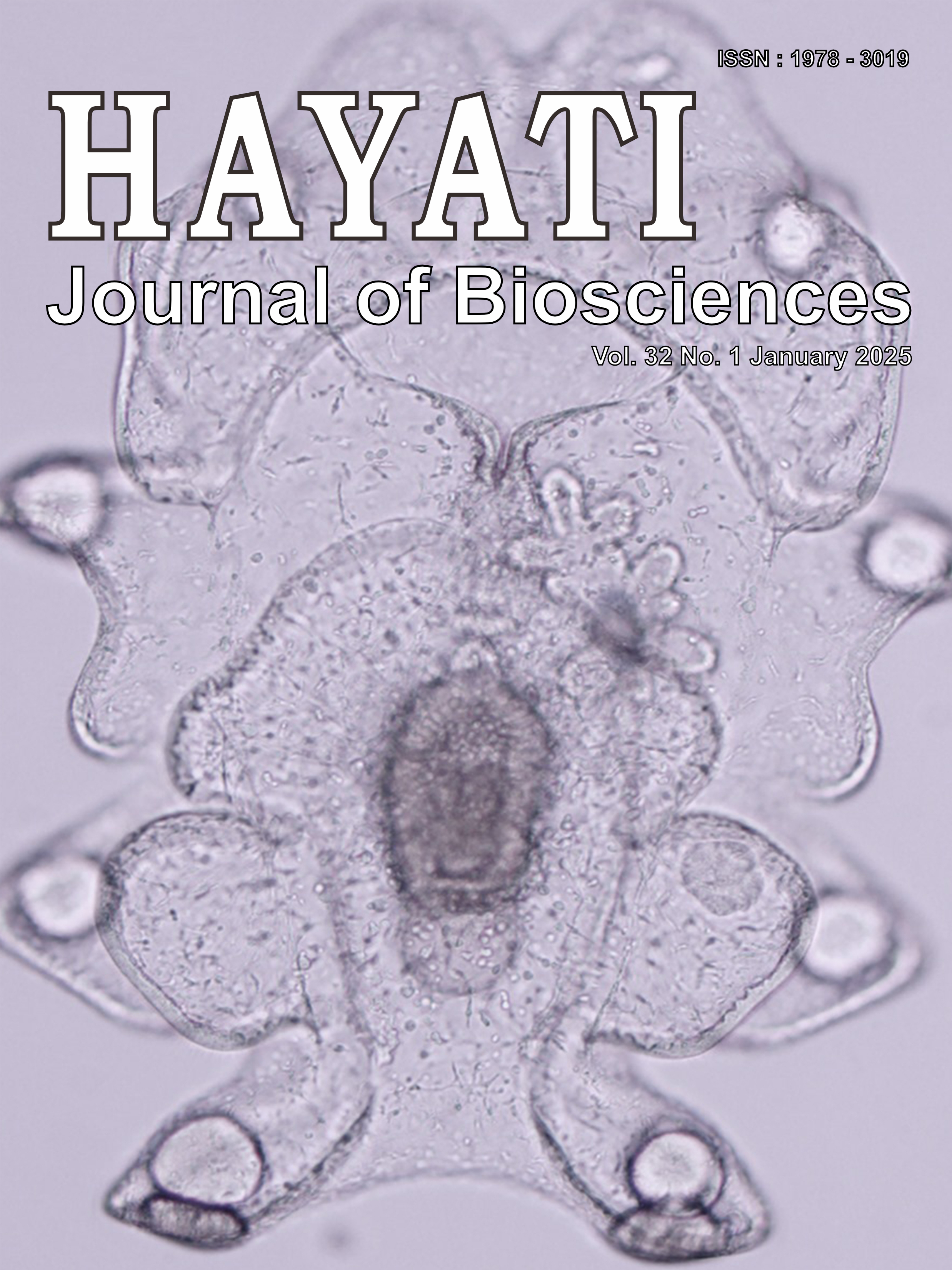Distribution and Utilization of Musa spp. by Nocte Tribe in Tirap District, Arunachal Pradesh, India
Abstract
The present study emphasized the distribution and utilization of both wild and domesticated Musa spp. of the Nocte tribe from Tirap district, Arunachal Pradesh. An extensive field survey was conducted from July to October 2023. A total of 62 households were surveyed randomly with the help of a semi-constructed questionnaire and personal interview. About 69% of the informants were from the age group of 31-60 years. About 84% live in a nuclear family type. Maximum informants were male (74.19%) and were married (80.64%). Only 17.75% of the informants were illiterate and were farmers (46.77%). In this study, 13 wild Musa spp. were reported from Tirap district, and 4 Musa spp. were found to be cultivated by the tribe. Of these, 76.47% were wild, and the rest were domesticated. M. itinerens had a widespread distribution range and occurred in various habitats between 155 and 1,711 masl altitudes. The highest use percentage was found in the Edible use category with 33%, followed by Ceremonies and Rituals (19%), Commercial uses (12%), and both Other and Packing purposes (10% each). Among the plant parts, inflorescences had the highest usage with 30%, followed by leaf (24%), pseudo stem (21%), etc. Among all Musa spp., M. itinerens had the highest number of usages (14 uses), followed by M. nagensium (12 uses).
Downloads
Copyright (c) 2025 Walung Songthing, Govinda Pangging, S. Sureshkumar Singh

This work is licensed under a Creative Commons Attribution-NonCommercial 4.0 International License.
HAYATI J Biosci is an open access journal and the article's license is CC-BY-NC. This license lets others distribute, remix, tweak, and build upon author's work, as long as they credit the original creation. Authors retain copyright and grant the journal/publisher non exclusive publishing rights with the work simultaneously licensed under a https://creativecommons.org/

























.png) IPB University
IPB University Department of Biology
Department of Biology The Indonesian Biological Society
The Indonesian Biological Society 

